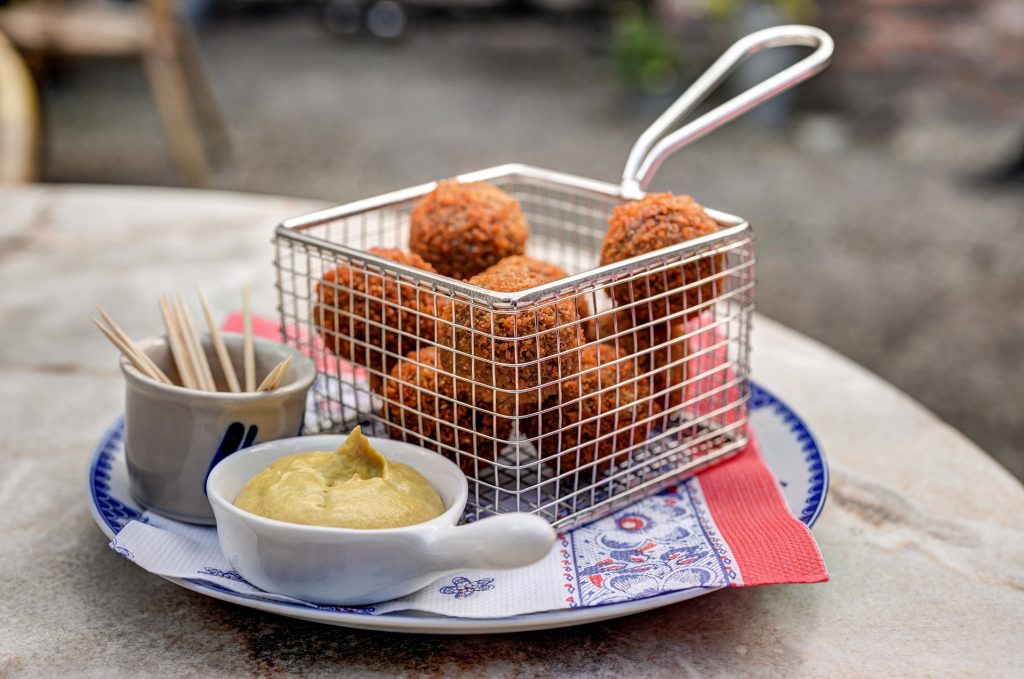
After the appearance of my article “Food – a Test of Courage” I was asked by German travellers to the Netherlands to go into more detail on the peculiarities of the Dutch cuisine. Some of the host country’s culinary offerings are very confusing for German guests.
That applies the other way around too, of course. My Dutch husband, who, like all honest people who don’t like cooking, rarely gripes about the food prepared by others, once said quite horrified: “Well, I just don’t understand the German health department ever allowing this!” The subject of this comment at the time was potato dumplings – but more on this in the second part.
Let us return to the Dutch cuisine and first look at to the “croquette,” and to its little brother, the “bitter ball.” Bernd Stelter wrote in one of his books “Everything the Dutch can pull out of a fryer has an unprecedented quality.” And what the Dutch pulls from the fryer is very diverse. In an average Dutch snack bar there are so many variations in –, let’s call them “fryable objects” – that it is difficult for a foreigner to keep track. The croquette is the most popular, a snack whose size demands respect. The bitter ball is more of an appetizer and the name is derived from the herbal bitter, which is very popular in the Netherlands and is often drunk shortly before consuming the snack.
Croquette and bitter ball consist of a meat ragout (in numerous variants), which is firm enough in a cooled state to be shaped. (!) The ragout is formed into bars or balls, provided with a breadcrumb coating (of which there are also numerous variants) and deep-fried just before consumption. Mustard tops it off.

It looks even more delicious when the croquette and the ragout in it are spread evenly before consumption on the slices of bread – a very common habit …
In station buildings and in cities you can also “grab the croquettes out of the wall,” where they wait in a kind of “incubator” for hungry passers-by: https://de.wikipedia.org/wiki/Febo.
In pubs and restaurants, a “bitter ball garnish” is often offered, with different varieties of bitter balls and – as a vegetarian option – the “cheese soufflé,” my personal favourite, filled with cheese instead of ragout.
There is little that divides the group of German visitors to the Netherlands as much as croquette and bitter ball: The fans adore them, miss them at home and name them an important reason regularly to travel to the Netherlands – and the skeptics shiver in disgust. And people who cannot grant them their pleasure, often spoil their appetite with their speculations about what they suppose is probably in them.
And let’s not forget: With a really freshly prepared bitter ball, the expression “burn your tongue” takes on a whole new meaning!
In the next post, I will devote myself to some German culinary delights that many Dutch people feel uneasy about. Look forward to potato dumplings, “Flädle” soep and pickled eggs!
Text: BBR, English translation: BCO
Bildquellen
- bitterballen – Pixabay: Bitterballen - Pixabay
- kroket – Pixabay: kroket - Pixabay

